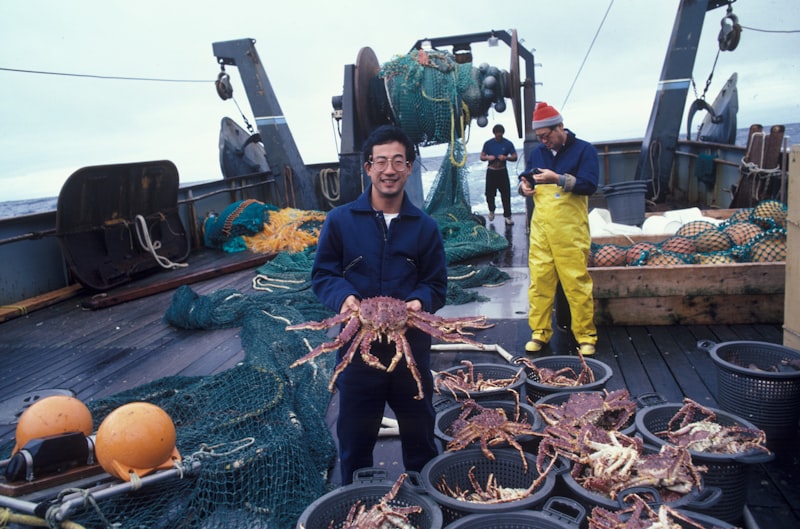Imagine diving into the depths of the ocean, surrounded by mysteries of centuries past. Marine archaeology opens a portal to history, uncovering the secrets hidden beneath the waves. One of the most fascinating aspects of this field is exploring shipwrecks. These sunken vessels are time capsules, holding stories of ancient trade routes, naval battles, and everyday life aboard.
Each shipwreck is a unique puzzle waiting to be solved. Archaeologists meticulously study the remains to piece together the ship’s origin, its cargo, and even the lives of those who sailed on it. Through careful excavation and analysis, artifacts emerge from the seabed, offering glimpses into bygone eras.
The study of shipwrecks isn’t just about historical curiosity; it’s about preserving our maritime heritage. These wrecks are delicate ecosystems, home to marine life and fragile relics. Archaeologists work hand in hand with conservationists to protect these sites while extracting valuable historical information.
One of the most famous shipwrecks, the Titanic, captivates the imagination worldwide. Its discovery revolutionized marine archaeology, showcasing the advanced technology used to explore and document wrecks in the deep sea. Today, cutting-edge equipment like remotely operated vehicles (ROVs) and 3D mapping software allows researchers to explore depths once thought inaccessible.
But not all shipwrecks lie in deep waters. Some are found close to shore, providing accessible opportunities for research and public engagement. These sites serve as outdoor classrooms, where enthusiasts and researchers alike can witness history firsthand.
In essence, marine archaeology is a journey through time, where each shipwreck tells a tale of human endeavor and maritime exploration. It’s a testament to our relentless quest to unravel the mysteries of the past, submerged beneath the ocean’s surface.
Unveiling History: Dive into the World of Marine Archaeology
One of the most compelling aspects of marine archaeology is its ability to bring history to life in ways that textbooks cannot. It’s like being a detective, uncovering artifacts and remnants of ancient civilizations that redefine our understanding of maritime trade, warfare, and daily life. Each discovery, whether it’s a Roman amphora or a sunken pirate ship, adds a new layer to the narrative of human civilization.
What makes marine archaeology even more intriguing is its intersection with technology. Advanced underwater exploration tools allow researchers to map and excavate sites with unprecedented precision. It’s akin to using a time machine, where high-tech sonar and remotely operated vehicles (ROVs) reveal submerged landscapes and artifacts in stunning detail.
Moreover, marine archaeology isn’t just about recovering treasures. It’s about preserving our cultural heritage and understanding the environmental impact of human activity on our oceans. By studying shipwrecks and submerged sites, scientists gain insights into past climates and ecosystems, helping us make informed decisions about conservation and sustainability today.

In essence, marine archaeology isn’t just a field of study; it’s a journey into our shared history, where every artifact tells a story and every dive holds the promise of a new discovery. It’s about bridging the gap between the past and the present, using the oceans as a vast archive of human experience waiting to be explored.
Lost Treasures Beneath the Waves: The Fascinating Hunt for Shipwrecks
Imagine diving into the deep blue sea, where sunlight barely reaches the hidden secrets lying on the ocean floor. The hunt for shipwrecks is not just a search for lost vessels but a quest for history and treasure buried beneath the waves. Shipwrecks tell tales of ancient maritime trade routes, naval battles lost to the depths, and sometimes, the allure of sunken riches waiting to be discovered.
Each shipwreck is a time capsule, preserving artifacts and stories that have weathered the sea’s embrace for centuries. From ancient galleons laden with gold and silver to modern cargo ships lost in storms, every wreck holds clues to our past. Archaeologists, historians, and treasure hunters alike are drawn to these underwater graveyards, driven by the thrill of uncovering forgotten history.
The search for shipwrecks requires more than just courage; it demands cutting-edge technology and a keen understanding of maritime history. Sonar scans pierce the darkness below, revealing outlines of vessels long gone. Divers equipped with high-tech gear descend into the depths, guided by meticulous research and the hope of finding artifacts that rewrite history books.
Yet, the hunt for shipwrecks is not without its challenges. Time and nature have a way of obscuring clues and burying treasures deeper into the seabed. The ocean, once a protector, now guards its secrets fiercely, challenging even the most experienced explorers.
Despite these challenges, the allure of discovering lost treasures persists. It’s a testament to human curiosity and the enduring romance of the sea. Each shipwreck unearthed adds a new chapter to our understanding of the past, weaving together stories of adventure, tragedy, and resilience.
As technology advances and our understanding of the oceans deepens, the hunt for shipwrecks continues to evolve. What lies beneath the waves remains a mystery waiting to be unraveled, a treasure trove of history waiting to be discovered by those brave enough to seek it.
Secrets of the Deep: How Marine Archaeologists Discover Ancient Shipwrecks
Imagine diving into the turquoise waters, surrounded by silence, except for the gentle swish of currents. As sunlight filters down, revealing a glimpse of a ship’s skeleton, the heart races with anticipation. Every wreck tells a tale, whispering of voyages long forgotten and maritime histories waiting to be rediscovered.
Marine archaeologists employ an array of cutting-edge technologies to map and explore these underwater treasures. Sonar systems, akin to modern-day detectives, scan the seabed, mapping out anomalies that could hint at hidden wrecks. Once a potential site is identified, divers plunge into the depths, equipped not just with diving gear, but with knowledge steeped in history and archaeology.
Each shipwreck is a time capsule, preserving artifacts that offer insights into ancient trade routes, naval warfare, and daily life onboard. From amphorae brimming with remnants of exotic spices to cannonballs that once thundered across the seas, each discovery adds a piece to the puzzle of our maritime past.
The work of marine archaeologists is not just about discovery; it’s about preservation and understanding. Delicate excavation techniques ensure that artifacts are carefully retrieved and preserved for further study. Each artifact tells a story, revealing the craftsmanship of forgotten civilizations and the resilience of vessels that once sailed the world’s oceans.
In this dance with history, every artifact recovered is a triumph, shedding light on civilizations lost to time. The thrill of discovery is matched only by the responsibility to protect these submerged treasures, ensuring that future generations can continue to unravel the secrets of the deep.

In the world of marine archaeology, each dive is a journey into the unknown, where the past meets the present, and where the secrets of ancient shipwrecks continue to captivate and inspire.
Shipwreck Mysteries: Exploring Sunken Vessels Across the Globe
One of the most intriguing aspects of shipwrecks is their ability to preserve moments frozen in time. From ancient galleons to modern freighters, each wreck is a time capsule waiting to be explored. These underwater relics not only serve as archaeological sites but also as windows into maritime history.
Imagine diving into the depths off the coast of Bermuda, where the Bermuda Triangle’s mystique meets its match in the wrecks of countless ships lost to its treacherous currents. The remains of vessels like the USS Cyclops, which vanished without a trace in 1918, continue to baffle researchers and thrill adventure-seekers alike.
Further south, off the coast of South Africa, lies the wreck of the SS Waratah, a steamship that disappeared in 1909 with over 200 souls on board. Its discovery decades later sparked renewed interest in its fate and the stories of those aboard.
In the serene waters of the Caribbean, the wreck of the RMS Rhone beckons divers with its tragic beauty. Sunk by a hurricane in 1867, this British Royal Mail steamer remains remarkably intact, its hull a haven for marine life and its cabins a haunting reminder of lives lost.
Each shipwreck tells a story—of human endeavor, maritime exploration, and the relentless power of the sea. They challenge us to uncover their mysteries while reminding us of our own vulnerability in the face of nature’s fury.
As technology advances, so too does our ability to explore these underwater time capsules. Remote-operated vehicles and advanced diving gear allow researchers to document wrecks in unprecedented detail, shedding light on their historical significance and ecological impact.
Shipwreck mysteries continue to captivate and inspire, offering a glimpse into worlds lost beneath the waves. They are more than just relics of the past; they are gateways to understanding our shared maritime heritage and the untold stories of those who sailed into history’s depths.
From Ocean Depths to Museum Halls: The Journey of Recovered Shipwreck Artifacts
Imagine this: a centuries-old ship lies undiscovered beneath the waves, its secrets hidden in the darkness of the ocean floor. Suddenly, explorers and archaeologists uncover its remains, bringing to light a treasure trove of artifacts that have been preserved by the sea for generations.
These artifacts, once lost to time and the vast expanse of the ocean, now embark on a new journey—one that begins with careful recovery and preservation. The process is delicate, requiring expertise and precision to ensure each piece is handled with the utmost care. From ancient pottery to cannons and personal belongings of sailors, each artifact tells a story of life at sea and the mysteries of the past.
But the journey doesn’t end there. Once recovered, these treasures undergo extensive conservation efforts. Imagine the skillful hands of conservators working tirelessly to remove layers of sediment and corrosion, revealing the artifact’s original splendor. It’s a painstaking process, often taking years to complete, but the results are breathtaking.
Now, picture these artifacts finding a new home in museum halls around the world. Here, they become more than relics of the past—they are storytellers, whispering tales of maritime adventures and lost civilizations to museum visitors. The artifacts are carefully curated and displayed, providing a glimpse into history that textbooks cannot capture.
Visitors stand in awe before a recovered ship’s figurehead, weathered by centuries underwater yet still bearing the marks of its craftsmanship. Or perhaps they marvel at a perfectly preserved navigational instrument, once used by sailors to navigate treacherous waters.
Frequently Asked Questions
How do marine archaeologists locate and identify shipwrecks underwater?
Learn how marine archaeologists use a combination of sonar technology, historical research, and diving expeditions to locate and identify shipwrecks submerged underwater.
What techniques are used to preserve artifacts recovered from shipwrecks?
Discover the techniques employed to safeguard artifacts retrieved from shipwrecks. Learn how experts utilize processes like desalination, stabilization, and conservation to preserve these historical treasures for future generations.
What are some famous shipwrecks that have been discovered and studied?
Discover fascinating insights into famous shipwrecks that have been uncovered and extensively studied. Learn about historical vessels like the Titanic, RMS Lusitania, and USS Arizona, each revealing unique stories and contributing to maritime history and archaeology.
What is marine archaeology and how does it relate to shipwrecks?
Marine archaeology explores underwater cultural heritage, focusing on shipwrecks to understand maritime history. It involves the study, excavation, and preservation of submerged artifacts and structures, shedding light on past naval technologies, trade routes, and maritime cultures.
How does marine archaeology contribute to our understanding of history and maritime cultures?
Marine archaeology enriches our understanding of history and maritime cultures by uncovering ancient shipwrecks, artifacts, and submerged sites. Through meticulous research and preservation, it reveals insights into ancient trade routes, navigation techniques, and cultural exchanges, offering a unique window into the past.


